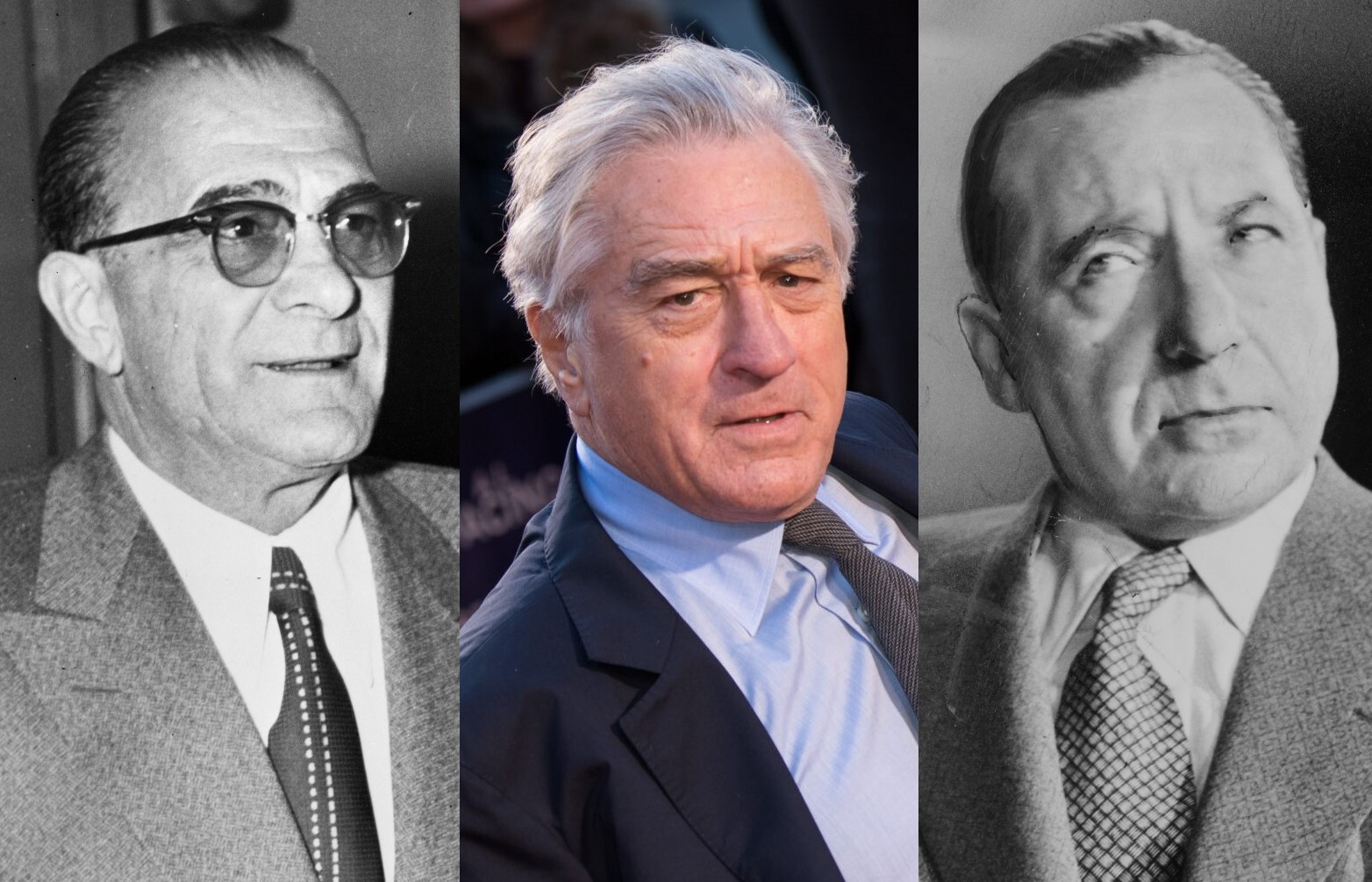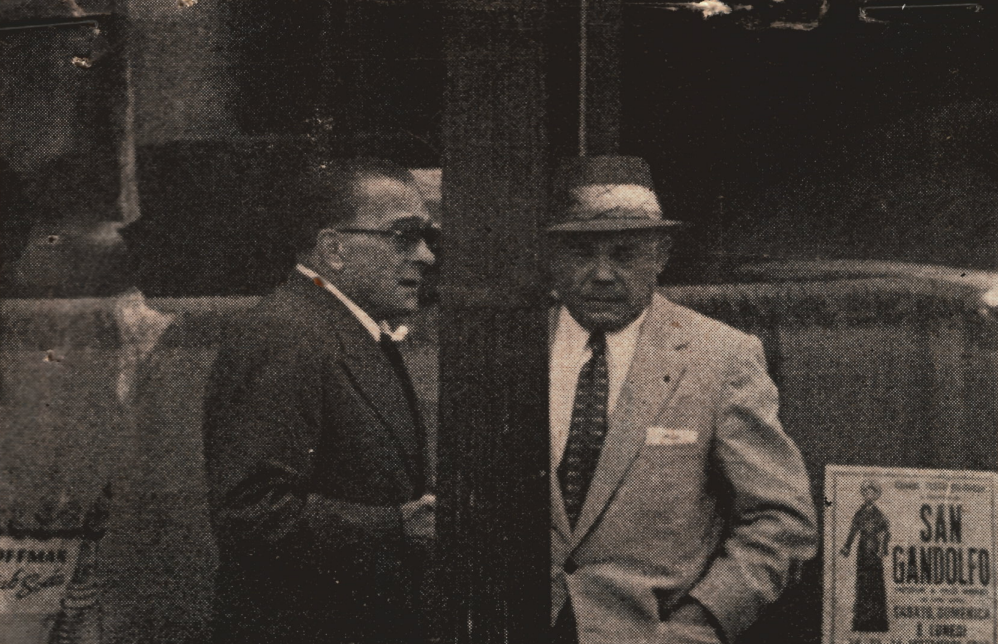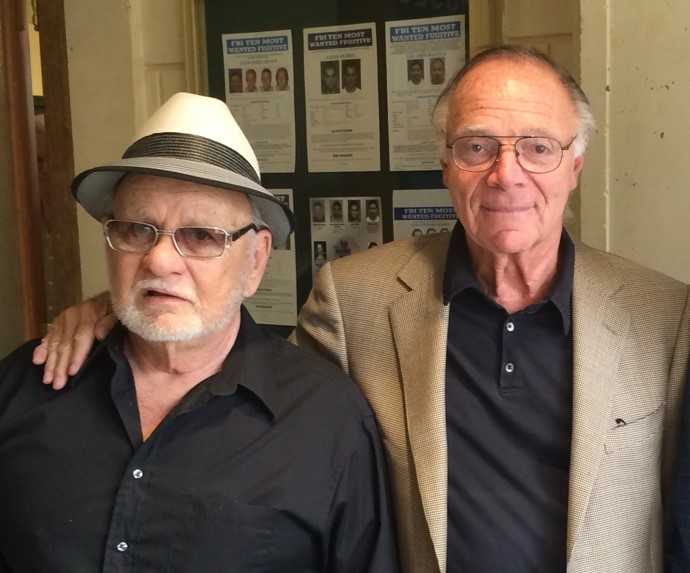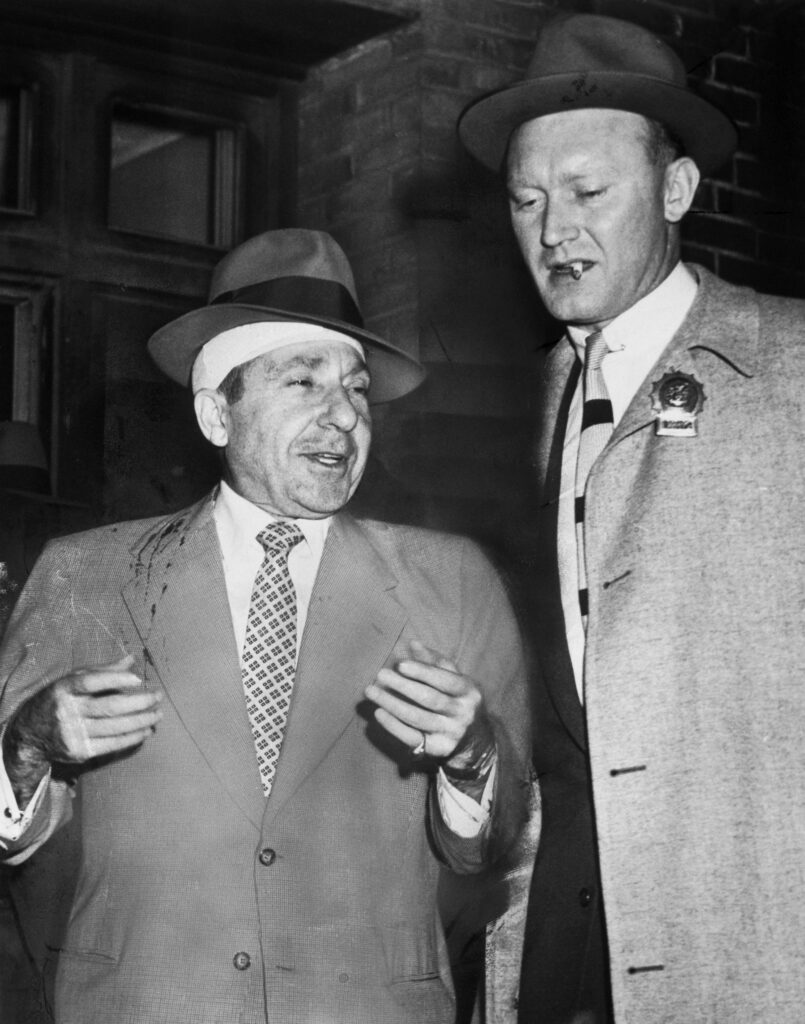
Upcoming film ‘Alto Knights’ depicts mobsters Vito Genovese, Frank Costello in bitter feud
Robert De Niro portrays both crime bosses in Nicholas Pileggi-scripted drama

The Mafia movie Alto Knights features veteran actor Robert De Niro playing dual roles as rival mobsters Vito Genovese and Frank Costello.
The movie was written by journalist and author Nicholas Pileggi and directed by Barry Levinson, whose accolades include a best director Academy Award for the 1988 film Rain Man. Among other movies, Levinson also directed Bugsy, starring Warren Beatty as Benjamin “Bugsy” Siegel.
Alto Knights, a Warner Bros. feature film originally titled Wise Guys, is set to be released on March 21, 2025.
Filmed in and around Cincinnati, Alto Knights focuses on two of New York City’s most notorious mobsters, Genovese and Costello, whose rise to power put them at odds with each other decades ago.
“Genovese was no match for Costello’s combination of political power and money-making ability,” Anthony M. DeStefano wrote in his 2021 book The Deadly Don: Vito Genovese, Mafia Boss. “So long as Costello was around, Genovese had a sense of inferiority.”
But on May 2, 1957, Genovese ordered a young mobster named Vincent Gigante to kill Costello, known as the “Prime Minister of the Underworld.” In the attempt, Costello was slightly wounded by a gunshot that grazed his head.
“Costello got the message,” DeStefano wrote, “and in a truce with Genovese, he agreed to ‘retire’ from the Mob, leaving the family in Genovese’s hands.”
The movie’s title reflects an era when underworld operatives hung out at Mafia social clubs. In New York City’s Little Italy, Alto Knights was a Mob club at Mulberry and Kenmare streets, according to DeStefano. Previously named the Café Royale, it was one of the haunts where Genovese and his lieutenants congregated.

“The origin of the name for the place was uncertain, with some thinking it had some connection to opera singing,” DeStefano wrote in The Deadly Don. “During Prohibition, it had been a location for bootlegging deals, and then it was the place that out-of-town gangsters would visit on a trip to New York.”
In an email, Pileggi noted that Alto Knights refers to the Genovese hangout at Mulberry and Kenmare streets, not the former Ravenite social club on Mulberry where, in 1990, Gambino crime boss John Gotti was arrested.
“Gotti made the Ravenite on Mulberry Street so famous people think it was the only club down there,” Pileggi said. “There were dozens.”
Pileggi adds to movie credits
Pileggi, a New York-based writer who also has a home in the Los Angeles area, is one of the nation’s leading authorities on the Mafia, an expertise first developed from his work as a reporter for the Associated Press and New York magazine. During that time, Pileggi collected background information on underworld figures operating in New York City and beyond, creating a large card catalogue with information on Mob bosses and rank-and-file members.
“In my office are four boxes of index cards upon which I compulsively jot the names and various details of every major and minor organized crime figure I run across in the press or court dockets,” Pileggi explained in the prologue to his 1985 true-crime book Wiseguy.
Pileggi’s experiences as a reporter during the Mob’s midcentury heyday led to his work in helping script two of the most acclaimed gangster movies of the past three-and-a-half decades — Goodfellas and Casino. Both were co-written with director Martin Scorsese, based on Wiseguy (named Goodfellas for the film version) and another of Pileggi’s nonfiction books, Casino: Love and Honor in Las Vegas.

‘A real actor’
During a recent telephone interview from his home in New York City, Pileggi, 91, discussed Alto Knights and addressed what the future might hold for movies based on the traditional Italian-American Mafia.
Dating back to the 1972 release of The Godfather, and even before then, movies focusing on the Mafia have had a long run of successful hits, including the two that Pileggi co-wrote with Scorsese.
However, with the gradual weakening of New York’s Five Families, the focus for filmmakers interested in movies about organized crime could shift to other underworld factions, including drug cartels, Pileggi said, adding that “crime moves on.”
Below are excerpts from Pileggi’s phone interview with The Mob Museum. The excerpts have been edited and rearranged for clarity and brevity.
Pileggi began the conversation by saying a media campaign for Alto Knights, which also stars Debra Messing and Katherine Narducci, is expected in the coming months.
The Mob Museum: What can viewers expect from Alto Knights?
Pileggi: It’s about the relationship between Genovese and Costello at the end. It’s the end of that life. That’s really what it’s about.
They both looked at life quite differently. Vito was more of a street guy and had been a boss, and Frank Costello was one of those middle men. That was his background, but he changed. He got to be very known politically. He was appointing judges. He was trying to take the Mob in another direction. Even though they knew each other, it was two different attitudes of life.
Robert De Niro plays both parts without CGI (computer-generated imagery), by the way. He just imbues the two characters. He makes himself look different. I saw Raging Bull the other night, and in one scene he’s 220 pounds, and the next time I see him he’s 140 pounds in the same movie. He just does that. He’s a real actor.
When you see the movie, he becomes a different character. He’s able to do it. I don’t know how. Actors can do that. He’s not the only one, of course, but he’s really good at it.

TMM: What is the future for Mafia movies?
Pileggi: I don’t know. It’s sort of, ‘What’s left?’ When was the last Mob movie? The Godfather really laid it out. That was Gone With the Wind for the Mob, right?
You look at the newspapers now. I’ve been covering this stuff all my life. You’d wake up in the morning. You’d pick up all the papers. I’d clip them, and I had files. Now I get the papers every day, and there’s nothing to clip.
Is it over? Is there a Mob? If I was covering the drug dealers in the world, in Mexico, or wherever, in Colombia — there’s a lot of stuff going on, but none of the traditional organized crime stuff that we were used to.
Crime moves on.
Larry Henry is a veteran print and broadcast journalist. He served as press secretary for Nevada Governor Bob Miller and was political editor at the Las Vegas Sun and managing editor at KFSM-TV, the CBS affiliate in Northwest Arkansas. Today, he is a senior reporter for Gambling.com.
Feedback or questions? Email blog@themobmuseum.org





